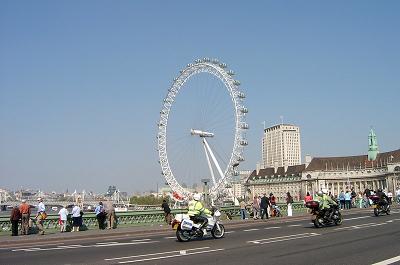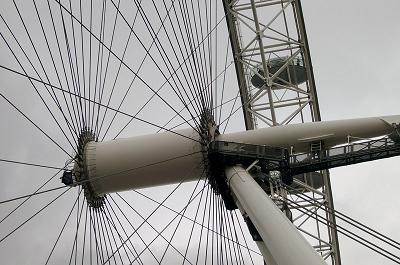The Big Wheel
 The London Eye
The London Eye
What a daft idea; total waste of money.
How all the commentators poured scorn on the most ridiculous thing anybody had ever suggested to celebrate the millennium. It was doomed to failure from the start. Mark my words.
It is now the United Kingdoms most popular paying tourist attraction with over three and a half million visitors per year. Standing proudly at 443 feet high, (135m) with a circumference of 1,392 ft (424m) it has become an image synonymous with modern Britain. I have reached the wonder of design and engineering that is the London Eye.
Yes, it may have been a pretentious project to begin with. Full of arty-farty pseudo-waffle about how a wheel would represent the turning of the years of the millennium. But when it was completed everyone took it to their hearts and instantly fell in love with it.
This morning it is only just after 9am and the queues are already forming. The first passengers will not be able to board for almost another hour. Such is the popularity of this attraction. On a clear day you can see as far as Windsor Castle, 25 miles (40Km) away.
Everywhere along the promenade people are craning their necks, peering upwards at the spokes and hub. Cameras whir as would-be David Baileys all attempt to capture the ultimate image of sun glinting on steel spokes.
The inspiration for the eye came from husband and wife designers David Marks and Julia Barfield. The original sponsors were British Airways who saw the commercial potential of being associated with the project, and they retained a share of the ownership until early in 2008. The London Eye is now owned and operated by the London Eye Company, a division of the Merlin Entertainments Group.
Since opening in March 2000 the Eye has won more than 75 awards for design, engineering and tourism. At the time of opening it was the largest ferries wheel in the world.
A single rotation takes 30 minutes, at a perimeter speed of 26cm per second. There are 32 capsules, each weighing 10 tonnes with a capacity of 25 people, enabling the wheel to carry 800 people per single revolution. Allegedly there are 32 capsules because there are 32 Boroughs of London. Whether that was arrived at by coincidence or design I am not sure, but it makes a nice story nonetheless.
 The Hub of the London Eye
The Hub of the London Eye
The spindle and hub weigh 330 tones, making it more than twenty times the weight of Big Ben on the opposite side of the water. Quite amazingly, considering the dire reputation of the cars made by the same company in the late 20th century, the spindle and hub were manufactured in the Czech Republic by Skoda.
The combined weight of the wheel and capsules is 2,100 tonnes, so you can imagine that some very solid foundations are required to keep it all up. Underneath the A-frame support are 2,200 tonnes of concrete and 44 concrete pillars sunk to a depth of 33 metres each.
All in all a wonder of modern Britain. It took seven years of planning, designing and construction.
Next Page >